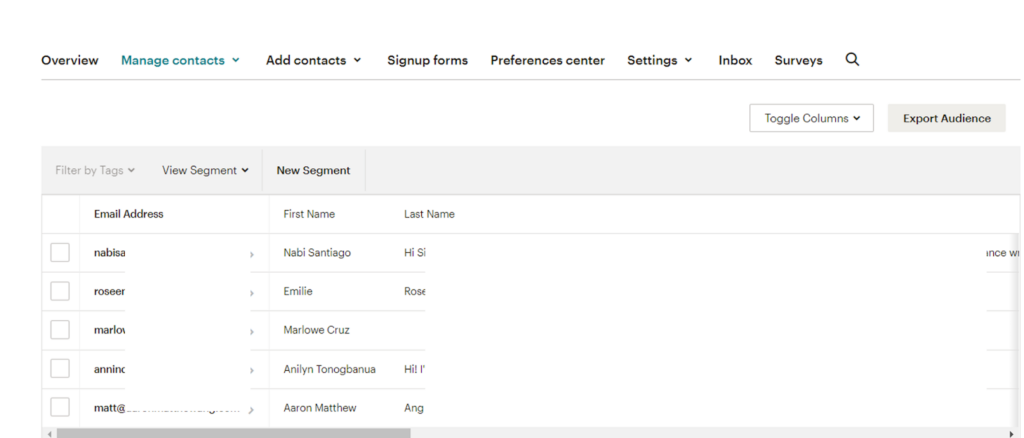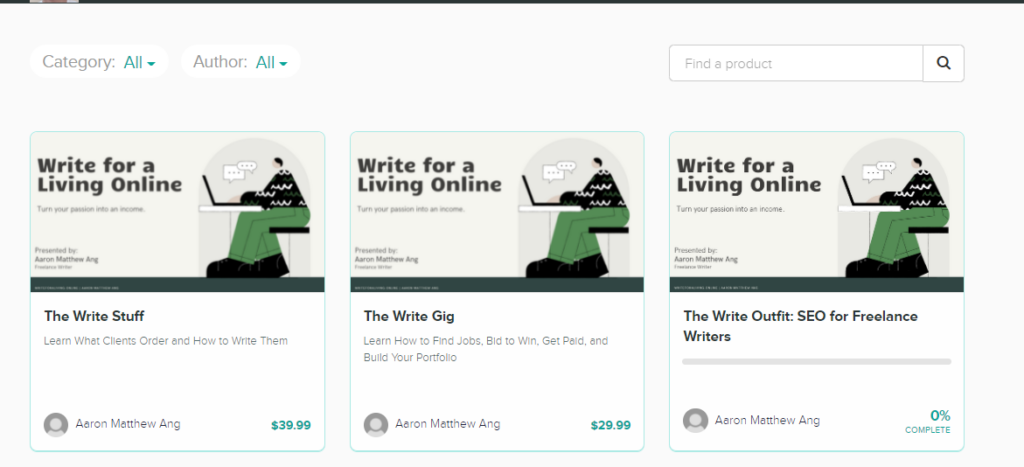3 Steps to Market Your Online Course (Free & Paid)
- April 21 2022
- Vaishak
We have the solution for you if you want to go from 0 to 1,000 traffic for your online course in a couple of months. First, you need the right teaching technology tools. But more importantly, you need the right marketing approach to get sales.
A fundamental aspect of marketing an online course that teachers miss out on is this: they do not treat the online course as a product. In this step-by-step guide, we will show you what that means. In the end, you shall be properly equipped to succeed as an online course creator.
What To Do Before Creating Your Online Course
Before you get started, you must have a plan. It would be extremely difficult to jump head-on without detailing what you must do, setting short-term goals, and planning for how you will achieve long-term results.”
1. Pick Your Niche And Expertise
The day’s first order is to determine what niche you want to penetrate. A niche is nothing more than an industry or a specialization. So start from a broad category and work your way down.
Here are some examples of niches:
- Fashion
- Health and Fitness
- Relationships
- Parenting
- Academics
- And a lot more
For each niche, you can break it down to a sub-niche. For example, consider relationships niche. You can break it down into friendship, romantic relationship, marriage, etc. From here, you can list down the best course ideas to build.
It is important that you nail this down now to not change your mind later. Surely, you are knowledgeable about many things. The danger here is that you can get lost in what you want to teach.
Choosing a niche makes you an expert on something. What you want is to be a go-to person for that specific niche. Being an expert in a particular subject matter is how you build credibility.
2. Decide Your Online Course’s Host
The next step is to decide where to host your online course. There are many software programs you can choose from.
Here are some examples:
- Learnyst
- Thinkific
- Teachable
- WordPress
- Kajabi
Choose the best online course platform based on what you want to do and the cost. For example, do you want to offer drip courses? Are you looking for a free platform or a paid one for your online course? Do you need affiliate marketers too?
Once you have decided what you want to offer, you can decide which online course platform best fits your needs.
3. Figure How You Can Make a Better Course Than Your Competitors
The next thing is to find out what your competitors are already offering and improve your course. How do you exactly do this?
First, visit YouTube channels. Find out what information is free. Next, enroll in some courses like yours. Yes, you will spend money, but you must consider this an investment.
After taking these courses, you now know what you are up against. Design your course from what you have seen, and make sure yours is better.
4. Think About Your Marketing Strategies
The last step in this phase is to create a master plan for how you will market your online course. Down the line, we will help you out with planning this out.
Step 1: Create A Great Online Course
Create A Great Product – Better Than Other Courses In Your Niche
The first step to marketing an online course has an excellent product. Treat your online course as a product. it has to be unique, and it must offer something that the others don’t
Unfortunately, there is no way you can find out unless you buy someone else’s course. The only alternative to this is to spend some time on YouTube, join free webinars, and find out what you can do to make a better course.
Have A Better User Experience – Students Going Through Your Course
Experience refers to what a student goes through. Below are some examples:
- Checkout for buying the course must be seamless; you must accept many payment types
- Account creation and site navigation should be easy
- The content should be exciting, not boring
- Your course has to be organized to guide the student step by step
There are many factors that affect the experience, including site speed. You must go through other people’s online courses yourself and list things you do not like to make an epic product. Then, work out these problems in your online course.
Provide Lesson Notes, Materials, Quizzes, Exercises, Etc
One thing that can set your online course apart is the sheer volume of activities. There are sites like StuDocu that thrive by providing thousands of different e-learning materials for students to access People who want to learn need guidance. As such, you must provide the students with many things to do.
Here are some examples of what you can offer:
- Quizzes
- Notes and summaries
- Downloadable content
- Patterns, plans, blueprints
The way to go about it is this: if you were the student, what activities would make you better after taking this online course? What items do you need to support your learning needs?
Read: How to create and sell study notes online
Create High-Quality Content
The last step in this phase is quality. Do not record videos like an amateur. Take the time to learn how to shoot videos as professionals do. While quality is subjective, remember that video content is storytelling. Think of your course videos as a film or an artwork where you want to mesmerize your audience.
You must also invest in tools like cameras, lighting, video editor, etc. No, there is no need to splurge money. There are many affordable tools you can use for recording an online course.
Step 2: Set Up Marketing Channels
The second step is branding and setting up your marketing channels. Below are some of the key elements worth noting.
1. Set Up Branding for your course business
A brand is an identity. What it means is that you must standardize everything about how you communicate. Below are some of the important aspects of branding:
- Icon and logo
- Color palette
- Font types and sizes
- Slogan
You must use the same colors, font styles, and font sizes across all your communication channels. Do not shift from one style to another. We suggest that you give it some thought before committing to a certain style when you create a logo or other branding elements.
Also, it is better to work with professionals to get a branding package than to do it on your own.
2. Create A Course Sales Page
The next step to setting up your marketing approach is building a sales page. In marketing parlance, people also call it the landing page.
A landing page is a webpage where people will land after clicking your ad. It is where they will see your business proposition, what is in it for them, and how much the course will cost them.
Although many online course platforms have a landing page builder, we suggest that you use a separate one. First, review some of the best landing page builders and see how they fit your marketing style.
3. Create Sales Funnels For Your Online Course
A sales funnel is a process that starts with the landing page. In it, you route the user to specific steps to make him buy.
Here is a sample funnel:
- Site visitor goes to your landing page
- You offer a free product, like an eBook, in exchange for his email
- Now, you send emails that have valuable info regularly
- After some time, the “lead” decides to take your online course
There are many types of sales funnels. Once you have selected one for your online course, the next step is to create the entire backbone process and deploy it.
4. Create An Email Sequence (If You’re Planning To Use Email Marketing)
Email marketing is a critical part of selling your online course. Once a person sees your ad or landing page, chances are he is unsure of buying.
However, you can convince this person to swap his email address with your lead magnet. From here, you can send regular emails to convince him to buy your course.
To facilitate email marketing, you need email marketing software. The best email marketing software is one that you can integrate with your landing page builder. In addition, choose one where you can automate email sequences.
Step 3: Get Traffic and Build Your Audience
The last and most crucial step is to find the right people to see your content. It is the most difficult, considering that marketing is one challenging aspect of sales.
The main methods you can market your online course are organic traffic, paid traffic, and promotions. Below are some tips on how to make the best of each approach.
Organic Traffic
- Build Social Media Pages For Your Brand – depending on our course, use the right social media channel to build a following. Ensure that you show your followers how to get to your landing page.
- Start Building Your Email List – create a lead magnet that you can give for free for a lead’s email address. Send regular content to your email subscribers. Add links to the email that takes them to your blog or YouTube channel. Nurture them and treat them like customers even if they have not bought your course yet. You can also use social media to grow your email list.
- Participate As a Guest Podcast – it is always a good practice to work with people in a similar niche. Of course, you do not want to work with a competitor. Instead, find a podcaster who can endorse your course. For example, if our course is about how to grow a bonsai, look for a podcaster whose niche is botany. Be a guest and show that you are THE expert!
- Partner With Other Teachers – you can also work with other instructors. Just make sure that they are not direct competitors. You and the other teachers can launch a symposium or a teaching event. In our bonsai niche example, you can work with a group of teachers whose niches are succulents, ornamental plants, herbal plants, etc.

Paid Traffic
You must do Paid traffic, but we urge you to be cautious. Test the waters little by little until you understand how paid traffic works.
- Pay Per Click Advertising – it is a kind of advertising where you pay for each click. The cost you pay is not more than your bid. In this advertising model, you do not pay for impressions. To navigate the world of PPC advertising and maximize its potential, it can be beneficial to seek the expertise of a professional, like contacting an Austin PPC management agency. They will work closely with you to develop a tailored PPC strategy, conduct keyword research, optimize ad copy, monitor performance, and continually refine your campaigns for optimal results.
- Influencer Marketing – you can work with social media influencers to endorse your course. Usually, they charge per thousand followers. It is advisable to search people on Tiktok and other social media platforms who are in the same niche as you. For example, if you teach how to apply makeup, you can look for influencers in the health and beauty niche. Reaching out to them and discussing how they can help you get your course promoted and endorsed is a great way to leverage influencer marketing. They are also a good source of increasing TikTok followers Usually, influencers charge per thousand followers, so it is important to have an understanding of their fees before proceeding.
- Social Media Ads – these are ads that you can deploy on Instagram, Facebook, Twitter, etc. You can use Instagram to sell your online course, but make sure that it is the right fit for your niche.
Other Effective Marketing Strategies:
Lastly, there are other best practices that we want to share to increase your sales conversion.
- Create A “Teaser” Mini-Course – this course is a short one where you tell the audience what they can expect from the full course. Give it for free and use it as bait or hook to lure people into purchasing the whole course.
- Get Reviews & Testimonials to Build Social Proof – once you have a successful student, get their feedback and publish that on your landing page. If you do not have a student yet, give the course for free and try to get positive feedback from the participants.
Build Promotions, Discounts & Bundles – not all people need everything in your course, so break it apart. Then, create bundles with lower prices. You can also offer drip content if you want—charge monthly, where the student also gets content every month only.

- Host a webinar – Create a webinar presentation where you can discuss the benefits of buying your online course. A webinar is a great way to market your course because it encourages active participation. You can get feedback from your target audience on any questions they may have and what content they are looking for to further improve your course.
- Word of Mouth – One best way to reach more target customers is to use word-of-mouth marketing from past and current customers. When your current customers are satisfied and see the value they get from your business, they can let their friends and relations know about your business and use them.
Keep Your Online Course Up To Date
Our last piece of advice is to keep up with the times. First, add content to your course and give it free to your existing students. Then, increase the price for new enrollees.
If you do not update your online course, other course creators will beat you to it. As they offer newer and better information, yours will become old—so stale that what you teach no longer applies to the current times.
As we move forward, demands change. Because of this, you must update your course every six months or so. It all depends on your niche. Things rarely change, like woodworking, so the updates depend on your industry.
Lastly, if you have a course and want to teach online, you can sign up for a free trial.


Leave your thought here